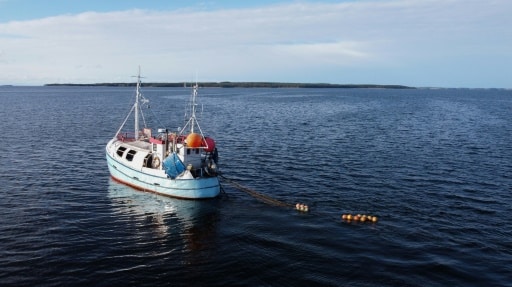BEIJING, April 2 (Xinhua) — At the National Center for Digital Fisheries Innovation (NCDFI) in Beijing, robotic fish mimicking tuna and dolphins swim in breeding tanks. Developed by a team at NCDFI, these bionic robots aim to modernize aquaculture by reducing labor intensity and optimizing fish farm management.
Previously, manual inspections of sea fishing cages took several days and were costly. To solve this issue, the team first developed robots equipped with sensors capable of inspecting a 400-meter diameter cage in just four hours.
« We want to make the work of fishermen less strenuous, » says Wei Yaoguang, a team member with over 20 years of experience.
However, a new challenge immediately emerged: the fish were stressed by the presence of the machines, prompting the team to rethink their design. The new models, smaller and more hydrodynamic bionic fish, now blend into the aquatic environment, even attracting real fish that naturally follow them.
According to the team, these bionic robots incorporate various advanced technologies, including fish-inspired propulsion systems and flexible dual-drive motors, which reduce disruptions and allow for smoother swimming. The robots are also equipped with high-precision sensors to monitor water quality and fish behavior in real-time.
At the same time, leveraging artificial intelligence (AI), the team developed autonomous movement control algorithms and lightweight AI chips, enabling these robotic fish to swim, analyze, and adapt autonomously in various underwater environments.
« Traditional feeding methods can lead to waste or uneven distribution, but the robotic fish, equipped with an integrated bait bin and sensors, can distribute food more precisely by analyzing biological indicators, such as the size, number, and activity levels of the fish, » explains Liu Jincun, an associate professor at China Agricultural University and team member. He adds that this reduces bait waste, lowers aquaculture costs, and optimizes the growth environment for the fish.
Beyond aquaculture, robotic fish have potential applications in deep-sea exploration and marine resource monitoring.
« Traditional underwater equipment is often bulky, energy-consuming, and disruptive to marine life. Thanks to their discretion and silent operation, robotic fish can collect data in deep waters, monitor marine ecology, and contribute to topographic mapping, all without disrupting aquatic ecosystems, » adds Mr. Wei.
Source: french.news




